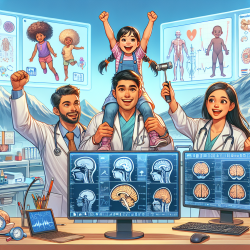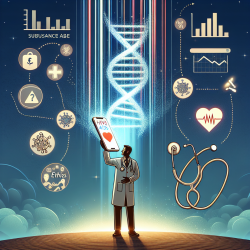Introduction
In the rapidly evolving field of genomics, the integration of machine learning (ML) is proving to be a game-changer for therapeutic development. A recent review article titled Machine Learning Applications for Therapeutic Tasks with Genomics Data provides a comprehensive overview of how ML is being utilized to enhance therapeutic discovery and development. As professionals in speech language pathology, especially those involved in providing online therapy services like TinyEYE, understanding these advancements can significantly impact our approach to creating better outcomes for children.
Machine Learning and Genomics: A Powerful Combination
The intersection of ML and genomics is opening new avenues for therapeutic development. The review identifies 22 applications of ML in genomics that span the entire therapeutic pipeline, from discovering novel targets to facilitating clinical trials and post-market studies. This integration is crucial because genomics data alone are insufficient for therapeutic development. Instead, the combination of genomics with other data types, such as electronic health records and clinical texts, enables the extraction of valuable insights.
Key Applications in Therapeutic Development
Some of the notable applications of ML in genomics include:
- Target Discovery: ML models can identify novel disease targets by analyzing complex biological data, which is critical for developing effective therapeutics.
- Personalized Medicine: By understanding individual genetic profiles, ML helps tailor treatments to improve efficacy and reduce side effects.
- Gene-Editing Tools: ML aids in developing precise gene-editing tools like CRISPR, minimizing off-target effects and enhancing therapeutic precision.
- Clinical Trials: ML facilitates the design and execution of clinical trials by predicting patient responses and optimizing trial protocols.
Challenges and Opportunities
While the potential of ML in genomics is immense, several challenges remain. These include technical issues like learning under different contexts with low-resource constraints, and practical concerns such as model mistrust, privacy, and fairness. Addressing these challenges requires ongoing research and collaboration across disciplines.
Conclusion
For practitioners in speech language pathology and related fields, embracing the advancements in ML and genomics can lead to more effective therapeutic interventions. Encouraging further research and staying informed about these developments will be key to harnessing their full potential. To delve deeper into the original research, please follow this link: Machine learning applications for therapeutic tasks with genomics data.










